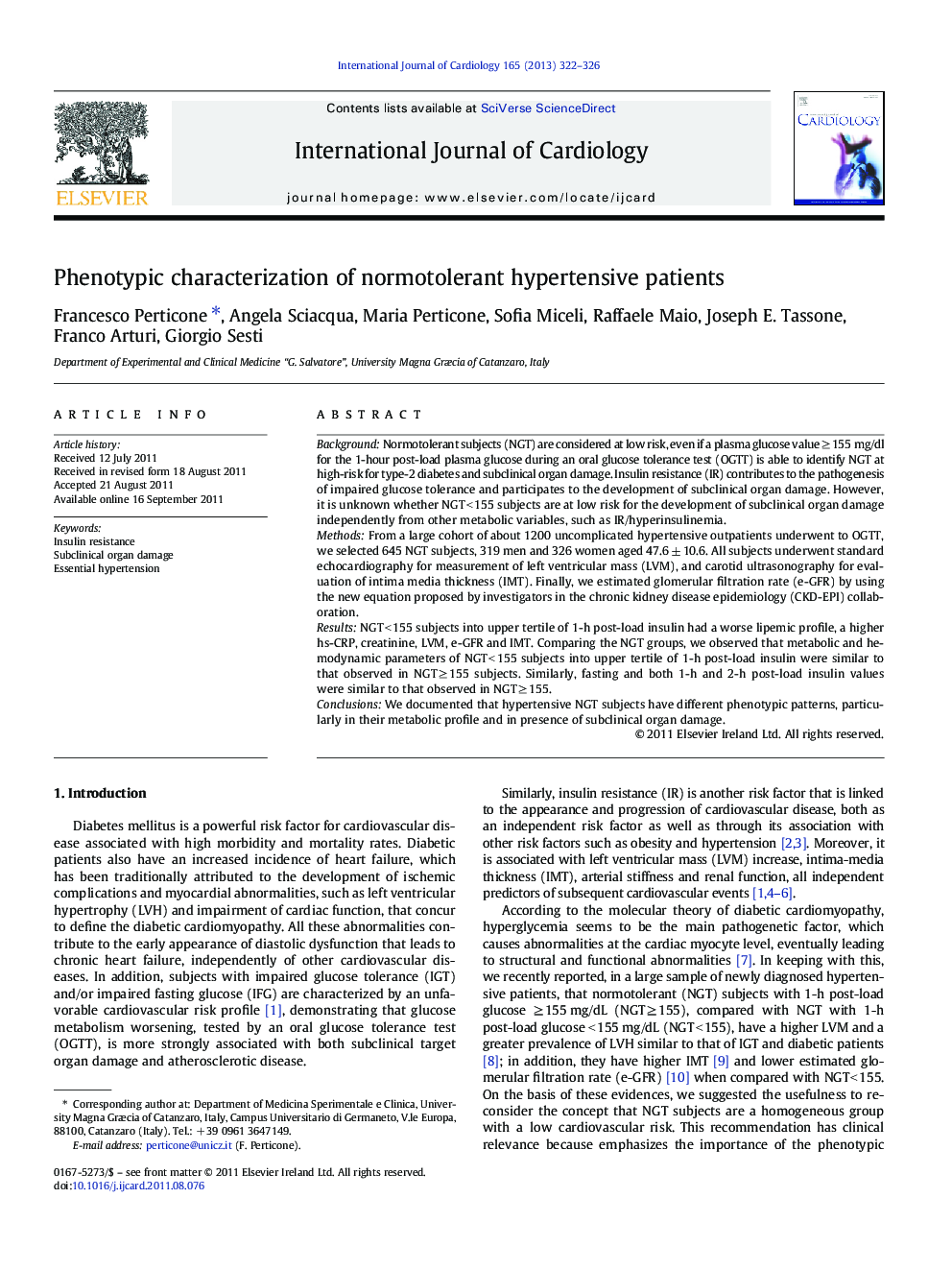| کد مقاله | کد نشریه | سال انتشار | مقاله انگلیسی | نسخه تمام متن |
|---|---|---|---|---|
| 5976861 | 1576222 | 2013 | 5 صفحه PDF | دانلود رایگان |
BackgroundNormotolerant subjects (NGT) are considered at low risk, even if a plasma glucose value â¥Â 155 mg/dl for the 1-hour post-load plasma glucose during an oral glucose tolerance test (OGTT) is able to identify NGT at high-risk for type-2 diabetes and subclinical organ damage. Insulin resistance (IR) contributes to the pathogenesis of impaired glucose tolerance and participates to the development of subclinical organ damage. However, it is unknown whether NGT < 155 subjects are at low risk for the development of subclinical organ damage independently from other metabolic variables, such as IR/hyperinsulinemia.MethodsFrom a large cohort of about 1200 uncomplicated hypertensive outpatients underwent to OGTT, we selected 645 NGT subjects, 319 men and 326 women aged 47.6 ± 10.6. All subjects underwent standard echocardiography for measurement of left ventricular mass (LVM), and carotid ultrasonography for evaluation of intima media thickness (IMT). Finally, we estimated glomerular filtration rate (e-GFR) by using the new equation proposed by investigators in the chronic kidney disease epidemiology (CKD-EPI) collaboration.ResultsNGT < 155 subjects into upper tertile of 1-h post-load insulin had a worse lipemic profile, a higher hs-CRP, creatinine, LVM, e-GFR and IMT. Comparing the NGT groups, we observed that metabolic and hemodynamic parameters of NGT < 155 subjects into upper tertile of 1-h post-load insulin were similar to that observed in NGT â¥Â 155 subjects. Similarly, fasting and both 1-h and 2-h post-load insulin values were similar to that observed in NGT â¥Â 155.ConclusionsWe documented that hypertensive NGT subjects have different phenotypic patterns, particularly in their metabolic profile and in presence of subclinical organ damage.
Journal: International Journal of Cardiology - Volume 165, Issue 2, 10 May 2013, Pages 322-326
